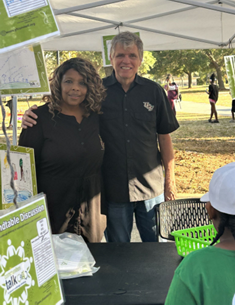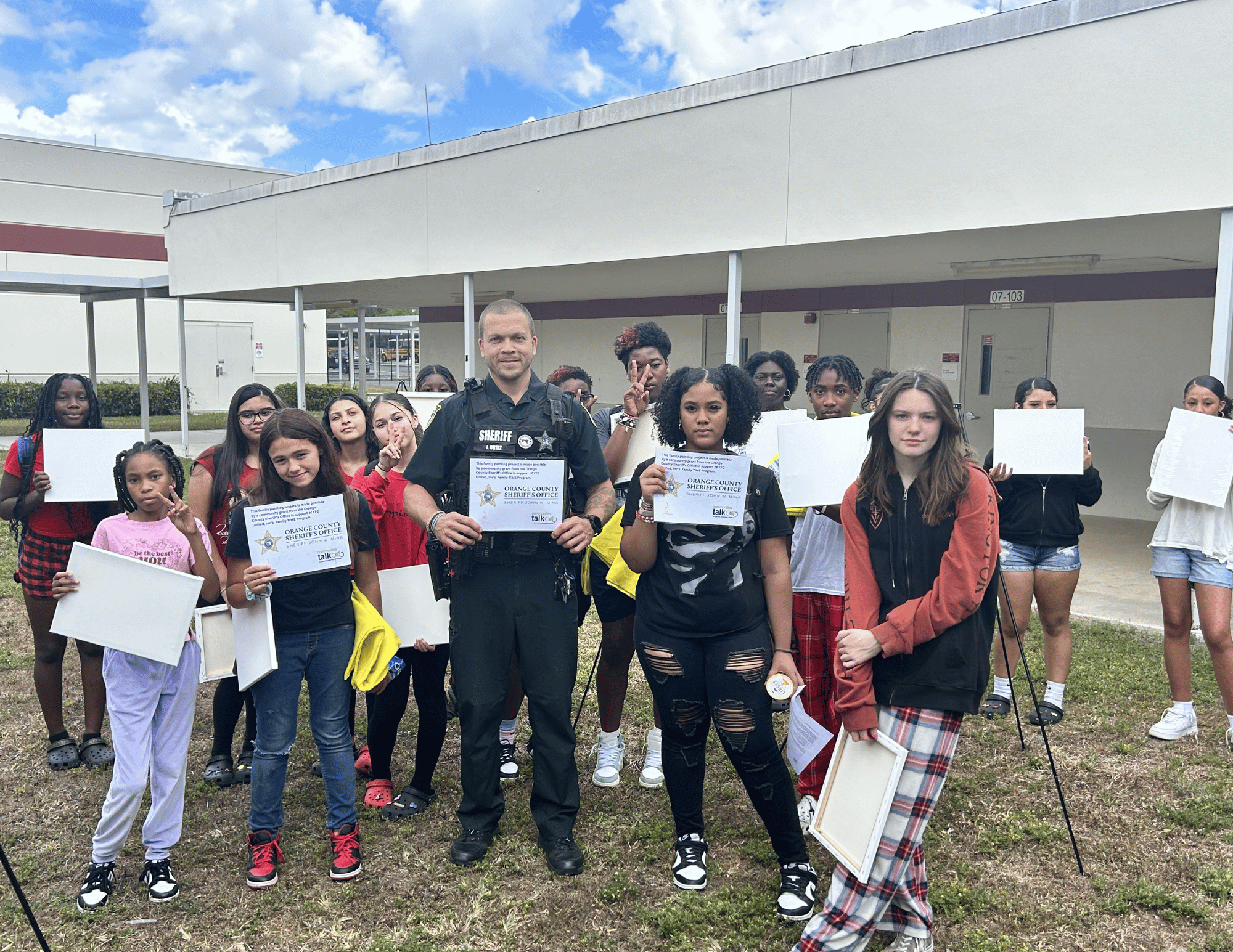|
Back to Prevention Stories
In the Loop Communities Talk
Hosted by:
Youth Families and Communities United, Inc.

Please briefly describe your Communities Talk activity.
Our in-person community event was a huge success. It was a culmination of several activities leading up to our BIG DAY! The event included vendors from MADD-Mothers Against Drunk Driving, representatives for Orlando Health, and Simply Health Care. Our local schools set up interactive tables, drug fact sheets were given to the adults, and the Director of the Orange County Drug Free Coalition was our guest speaker. We had over 200 people attend the event. Families created a communication plan and participated in a Family Tree Painting Project, which was funded by the Orange County Sheriff’s Department. Following the event, we continued with other prevention initiatives.

How does alcohol and other drug misuse affect your community?

Alcohol and drug misuse by youth and teens can have a long-lasting negative effect on Orange County. Based on the 2022 Florida Youth Substance Abuse Survey, the percentage of Orange County youth who reported using alcohol in the past 30 days was 5.2% among middle schoolers and 12.3% among high school students. Vaping is also a major issue, with 7.9% of high school students vaping nicotine and 6.9% of high school students vaping marijuana in the past 30 days (https://www.myflfamilies.com/sites/default/files/2022-12/Orange.pdf). In Orange County, we want all our youth to reach their full potential. Therefore, we know there is a need for prevention. When our youth lack resources such as a caring adult, constructive after-school programs, opportunities for community service, part-time jobs, and other resources, they may choose to engage in undesirable behaviors and be at greater risk for substance use. This may cause our community to experience higher crime rates, negative economic consequences, health issues, and a breakdown of the family.

Which prevention strategy(ies), as defined by SAMHSA’s Center for Substance Abuse Prevention, best fit your Communities Talk activity?
- Community-Based Process Strategy - focuses on enhancing the capacity of the community to address AOD issues through organizing, planning, collaboration, coalition building, and networking.
- Information Dissemination Strategy - focuses on improving awareness and knowledge of the effects of AOD issues on communities and families through “one-way” communication with the audience such as speaking engagements, health fairs, and distribution of print materials.
- Education Strategy - focuses on “two-way” communication between the facilitator and participants and aims to improve life/social skills such as decision making, refusal skills, and critical analysis.
- Alternative Strategy - focuses on redirecting individuals from potentially problematic situations and AOD use by providing constructive and healthy events/activities.

What goal(s) did you hope to accomplish with your Communities Talk activity?
- Hold meetings or discussion groups on alcohol and/or other drug misuse prevention.
- Develop strategic plans to reduce and prevent alcohol and/or other drug misuse.

Did you accomplish your goal(s)?
Yes

What challenge(s) did you face in planning your activity this year?
- We did not have any major challenges in planning our activity. However, we will work for additional funding to expand our efforts to more sites next year.

How did you overcome these challenges?
Our next steps will include planning to include more community partners and working to secure additional funding for a broader reach in 2025.

What are your next steps?

- Host follow-up meetings or activities
- Create new action groups to tackle specific issues raised during our Communities Talk activity
- Conduct research efforts to learn more about issues in our community
- Create a public education campaign to raise awareness and/or change behaviors around underage drinking (i.e., create PSAs and other promotional materials)
- We will continue to participate in other drug prevention upcoming events or special projects such as National Prevention Week, Red Ribbon Week, and Mental Health Awareness Month.

If you’ve conducted Communities Talk activities in prior years, how has your repeated participation contributed to progress in achieving your prevention goals?
We were able to connect the dots and continue prevention throughout the whole year.

Organizations that conduct Communities Talk activities often involve other organizations in the planning and execution of events. Please indicate which type(s) of organizations you involved in your activity planning.
- Law enforcement
- Youth-led organizations
- Secondary schools
- Elementary schools
- Local chapters of national organizations
- Charitable organizations
- State and local government agencies (e.g., public health departments)

Which of the following best describes the primary audience(s) for your Communities Talk activity?
- Youth
- Parents
- Teachers or other education staff
- Prevention specialists and volunteers
- Law enforcement officials
- Youth leaders (e.g., coaches, parks and recreation personnel, and scouting leaders)
- Healthcare providers
- Black or African American community members
- Hispanic community members

How did you reach and engage your primary audience(s) to encourage them to participate in your activity?
First, we created a roundtable discussion sheet that we used to solicit thoughts from the community prior to our main Communities Talk event. We allowed and encouraged individuals to take ownership in preventing underage drinking and substance misuse by asking: How can you help prevent underage drinking or substance misuse in your community? We informed the community by providing information directly from the Communities Talk site, describing that Communities Talk is an educational initiative from SAMHSA that empowers communities to prevent underage&

Which Communities Talk resources (or other SAMHSA resources) were most helpful for your activity?

- Communities Talk website
- Communities Talk toolkits
- The Communities Talk website provided us with the information, facts, and statistics we needed for our roundtable discussion sheets. Also, being able to see what some agencies had done in the past was helpful.
|
|